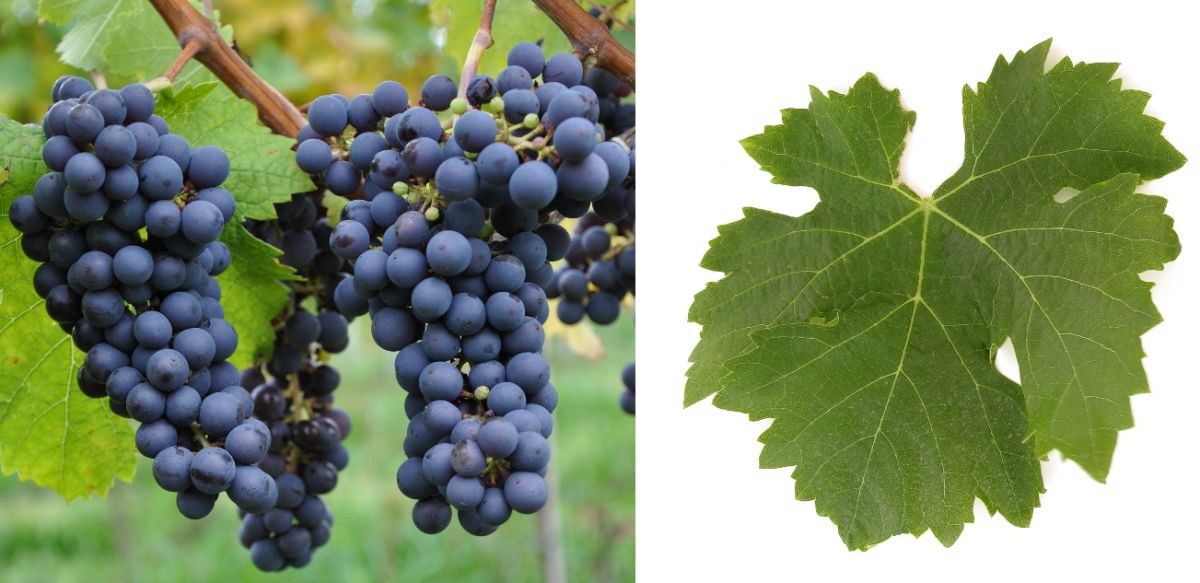The red grape variety originates from France or Spain. There are around 80 synonyms that testify to the vine's great age and spread. The most important ones, grouped alphabetically by country, are Achéria, Ardounet, Arrouya, Bidure, Boubet, Bouchet Franc, Bouchet Saint-Émilion, Bouchy, Breton, Cabernet Aunis, Cabernet Francese, Cabernet Franc Noir, Cabernet Gris, Cabrunet, Capbreton Rouge, Carbonet, Carbouet, Carmenet, Couahort, Cros Cabernet, Crouchen Negre, Crouchen Noir, Fer Servadou, Gros Bouchet, Gros Cabernet, Grosse Vidure, Messanges Rouge, Morenoa Veron Bouchy, Noir Dur, Plant Breton, Plant de l'Abbé Breton, Sable Rouge, Trouchet, Trouchet Noir, Véron, Vidure, Vuidure (France); Tsapournako (Greece); Cabernet Franc Crni (Croatia); Cabernet Bresciano, Cabernet Frank (Italy); Bordo (Romania); Bordeaux (Switzerland); Verdejilla Tinto (Spain).

Despite seeming synonyms or morphological similarities, it should not be confused with the varieties Ardonnet, Arrouya, Béquignol Noir, Cabernet Sauvignon, Carmenère, Fer (to which there may be a relationship), Gros Cabernet or Hondarribi Beltza. It is a very old variety in Bordeaux, but genetic and historical facts point to an origin in the Spanish Basque Country. According to one hypothesis, Cabernet Franc was introduced to Spain under the name Achéria by pilgrims from Irouléguy (French Basque Country) on their way to Santiago de Compostela (Galicia). However, the reverse route from Spain to France is also conceivable.
According to an unlikely and unverifiable hypothesis, it is the ancient variety Biturica mentioned by the Roman authors Pliny the Elder (23-79) and Columella, as indicated by the synonym Bidure. The ancestry (parentage) is unknown. It is considered an important leading variety in the European grapevine gene pool. By means of DNA analyses, direct descendants resulting from presumably natural crossings were determined or parent-offspring relationships were established. It was also the crossing partner of several new varieties:
- Achemoyeta - new cross with Tannat / France
- Bacchus Noir - cross with Gouais Blanc / France
- Breton Blanc - open-pollinated seedling / France
- Caberlot - cross with Merlot
- Cabernet Goudable - cross with Crouchen / France
- Cabernet Moravia - new cross with Zweigelt / Czech Republic
- Cabernet Sauvignon - crossbreed with Sauvignon Blanc / France
- Carmenère - crossbreed with Gros Cabernet / France
- Erilon - new variety (Blaufränkisch x CF) x (Merlot x Seibel) / Czech Republic
- Hondarribi Beltza - parent-offspring relationship / Spain
- Incrocio Bruni 452 - new breeding with Merlot / Italy
- Merlot - crossbreed with Magdeleine Noire des Charentes / France
- Morenoa - parent-offspring relationship / Spain
- Rigotti 125 - new cross with Merlot / Italy
A first mention of the variety as Breton could date back to 1534 by the famous poet François Rabelais (1495-1553) in his work "Gargantua and Pantagruel". According to another variant, in 1631 Cardinal Richelieu (1585-1642) sent over 1,000 vines from Bordeaux to his estate manager Abbé Breton, who planted them in the Loire areas of Bourgueil and Chinon. The first mention of the name Cabernet Franc dates back to 1823, but the name Cabernet and the old synonyms mentioned were also used for other varieties, especially Cabernet Sauvignon, which makes it difficult to distinguish between them. The medium-ripening, small-berried vine is susceptible to both powdery mildew and botrytis. It is particularly well suited to clay-limestone and also sandy soils. The variety yields not particularly colourful, spicy red wines with soft, silky tannins with raspberry aroma as well as vegetal notes. However, the wines, which usually mature quickly, also have a shelf life if they are matured appropriately. The wine, which is similar to Cabernet Sauvignon, is somewhat overshadowed by its higher-quality offspring and is rarely vinified as a single variety.
The variety occupies 32,327 hectares of vineyards in France. It is mainly represented in Bordeaux with around 12,000 hectares, on the Loire with around 15,000 hectares and in south-western France, where it is permitted everywhere in many appellations. With Cabernet Sauvignon and/or Merlot, Cabernet Franc is a classic partner in the Bordeaux blend. In the great wines, however, it is only present (if at all) to a maximum of 10%, with a few exceptions. Other European countries are Bulgaria (240 ha), Germany (32 ha), England, Greece (10 ha), Italy especially in the north-eastern regions (5.590 ha), Kazakhstan (56 ha), Croatia (95 ha), Moldova (756 ha), Austria (75 ha), Portugal (23 ha), Romania (72 ha), Russia (20 ha), Switzerland (63 ha), Serbia (79 ha), Slovenia (27 ha), Spain (680 ha), Turkey (37 ha), Hungary (1,368 ha) and Cyprus.
Countries outside Europe are in Argentina (929 ha), Australia (328 ha), Brazil (6,834 ha), Chile (1,578 ha), China (600 ha), Israel (110 ha), Canada (820 ha), New Zealand (109 ha), South Africa (835 ha) and Uruguay (266 ha), and in the USA (2,199 ha) in Indiana, California, Michigan, New York, Oregon, Virginia and Washington. The variety occupied a total of 56,052 hectares of vineyards in 2016, with an upward trend. It is thus ranked 16th in the global grape variety ranking (Kym Anderson).
Source: Wine Grapes / J. Robinson, J. Harding, J. Vouillamoz / Penguin Books Ltd. 2012.
Images: Ursula Brühl, Doris Schneider, Julius Kühn-Institut (JKI)
Voices of our members

The Wine lexicon helps me to keep up to date and refresh my knowledge. Thank you for this Lexicon that will never end in terms of topicality! That's what makes it so exciting to come back often.
Thorsten Rahn
Restaurantleiter, Sommelier, Weindozent und Autor; Dresden